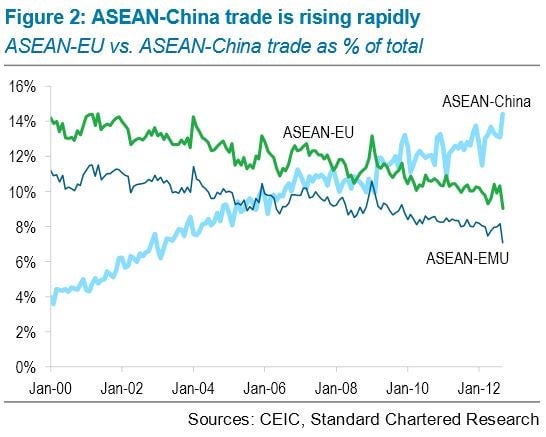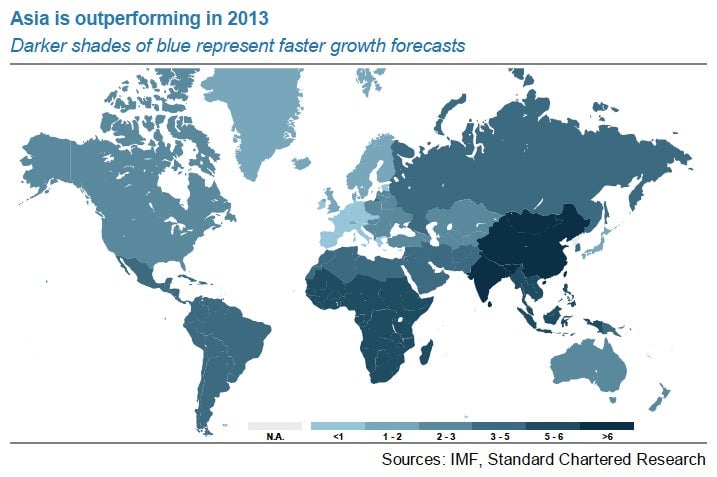The Asian power shift that’s propping up China
Despite a global economic slowdown and prolonged weakness in Europe—which the US not long ago overtook as the largest buyer of Chinese exports—China’s economy is still plugging along. Indeed, China and Southeast Asia form one of the brighter spots for the global economy right now. We’ve argued before that Asian producers are taking advantage of newly empowered Asian consumers, even as consumer demand from abroad starts to shrink.

Despite a global economic slowdown and prolonged weakness in Europe—which the US not long ago overtook as the largest buyer of Chinese exports—China’s economy is still plugging along. Indeed, China and Southeast Asia form one of the brighter spots for the global economy right now. We’ve argued before that Asian producers are taking advantage of newly empowered Asian consumers, even as consumer demand from abroad starts to shrink.
But the chart above suggests that this is more than just the work of a financial crisis. It’s all part of a generational shift that’s connecting China with other regional partners. In particular, Standard Chartered’s data show a swift and steady rise in the volume of trade between China and the ten ASEAN countries. Although that shift has been slightly more pronounced since the end of the financial crisis, the momentum towards a closer Asia is building, and has been for a long time.
Analyst Marios Maratheftis elaborates:
Asia continues to grow at a just-right pace: not too hot and not too cold. Although it is not booming, Asia is seeing sustainable growth rates driven by the rise of the consumer, urbanisation and, importantly, a rebound in China.
